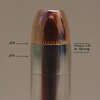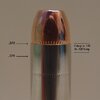desmobob
Member
I'm looking at the reloading room shelves and finding stuff to clear out/shoot up before full-bore winter weather gets here.
I found two 250-count boxes of Nosler .357" 150gr. FMJRN "IPSC" bullets. I remember picking these up on clearance many years ago.
These jacketed round nose bullets have no cannelure. My RCBS .38/.357 dies have a roll crimp die. Can I safely load these for .38 Special? .357 Magnum, or will the bullets jump? Light roll crimp? No crimp? Or should I use them in mild loads for my 9mm CZ-75B?
I found two 250-count boxes of Nosler .357" 150gr. FMJRN "IPSC" bullets. I remember picking these up on clearance many years ago.
These jacketed round nose bullets have no cannelure. My RCBS .38/.357 dies have a roll crimp die. Can I safely load these for .38 Special? .357 Magnum, or will the bullets jump? Light roll crimp? No crimp? Or should I use them in mild loads for my 9mm CZ-75B?





